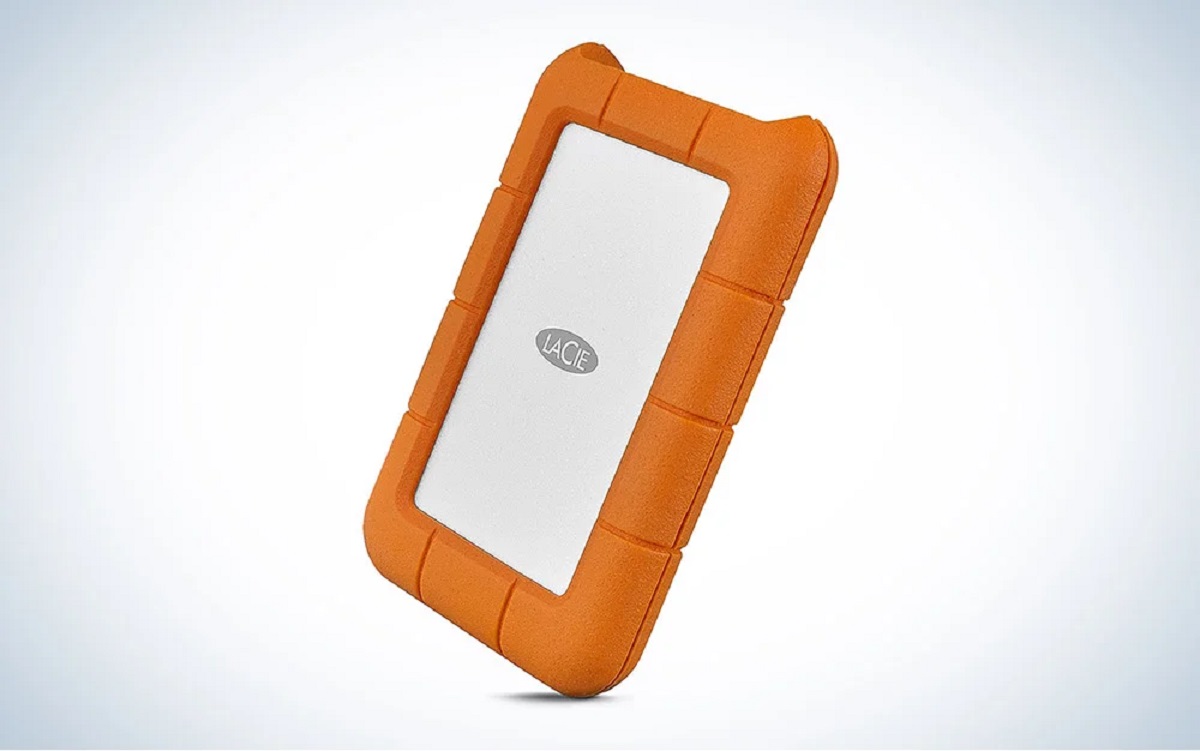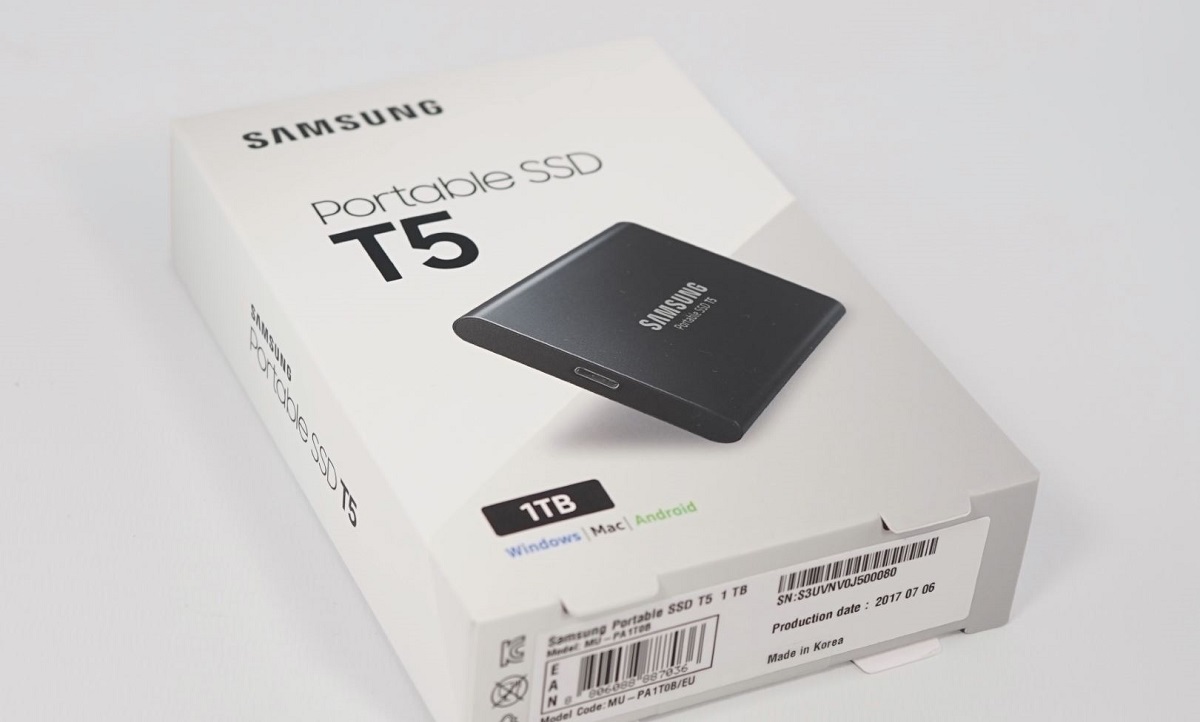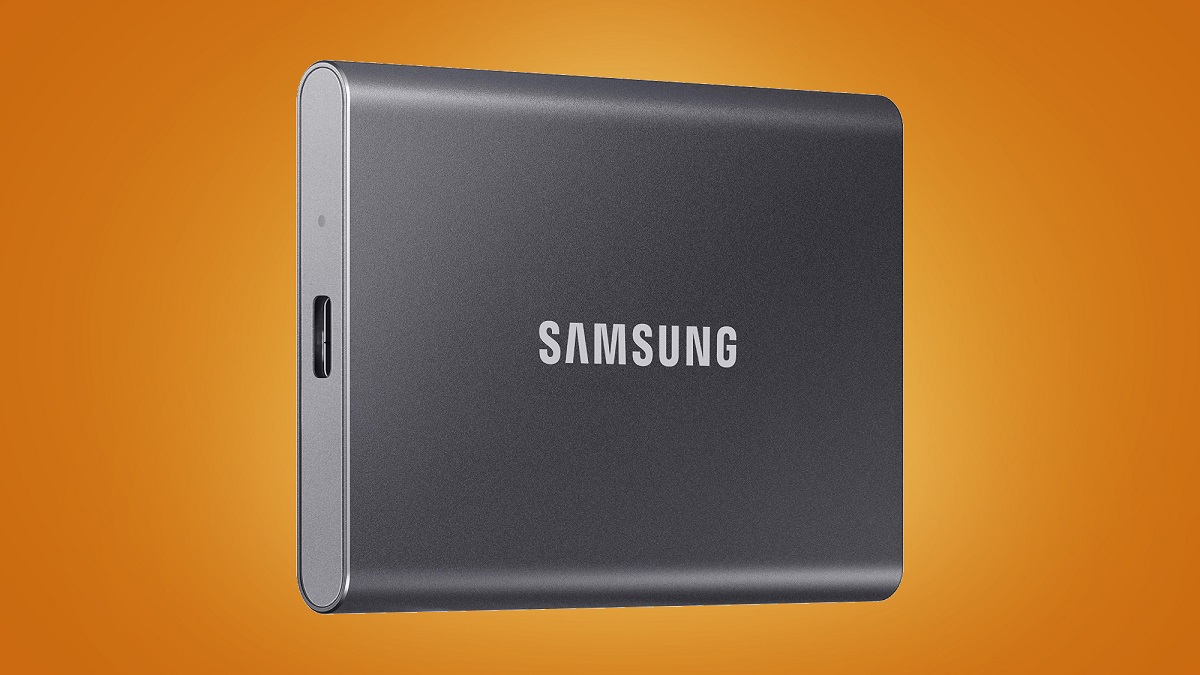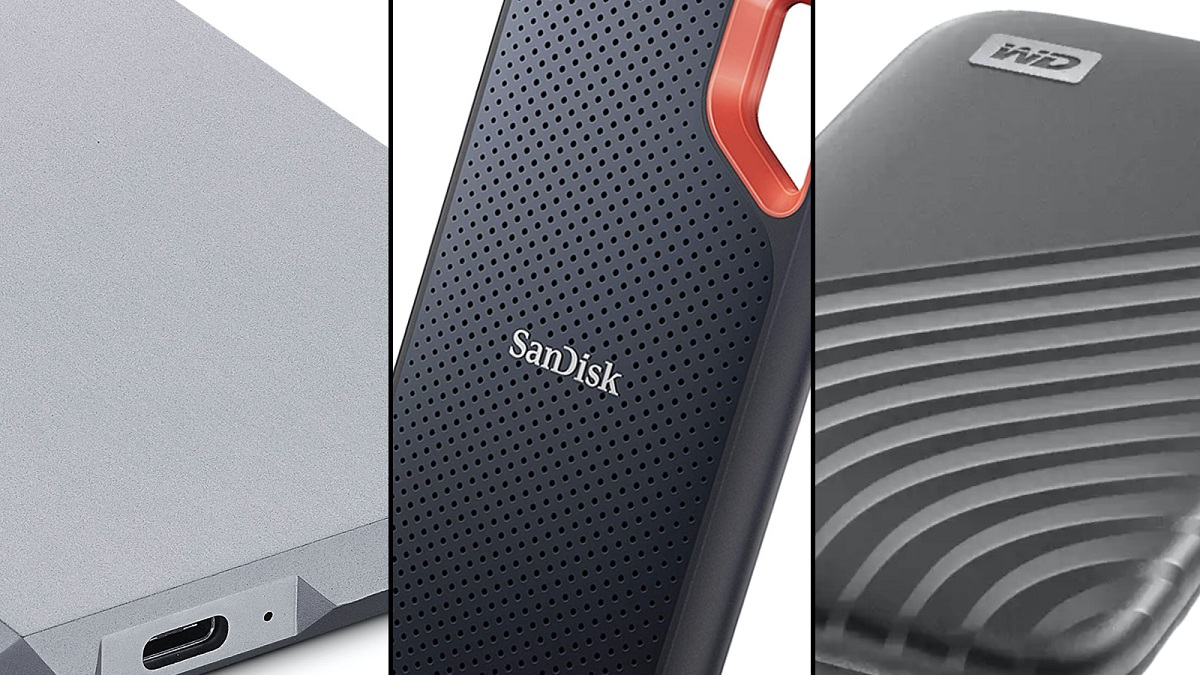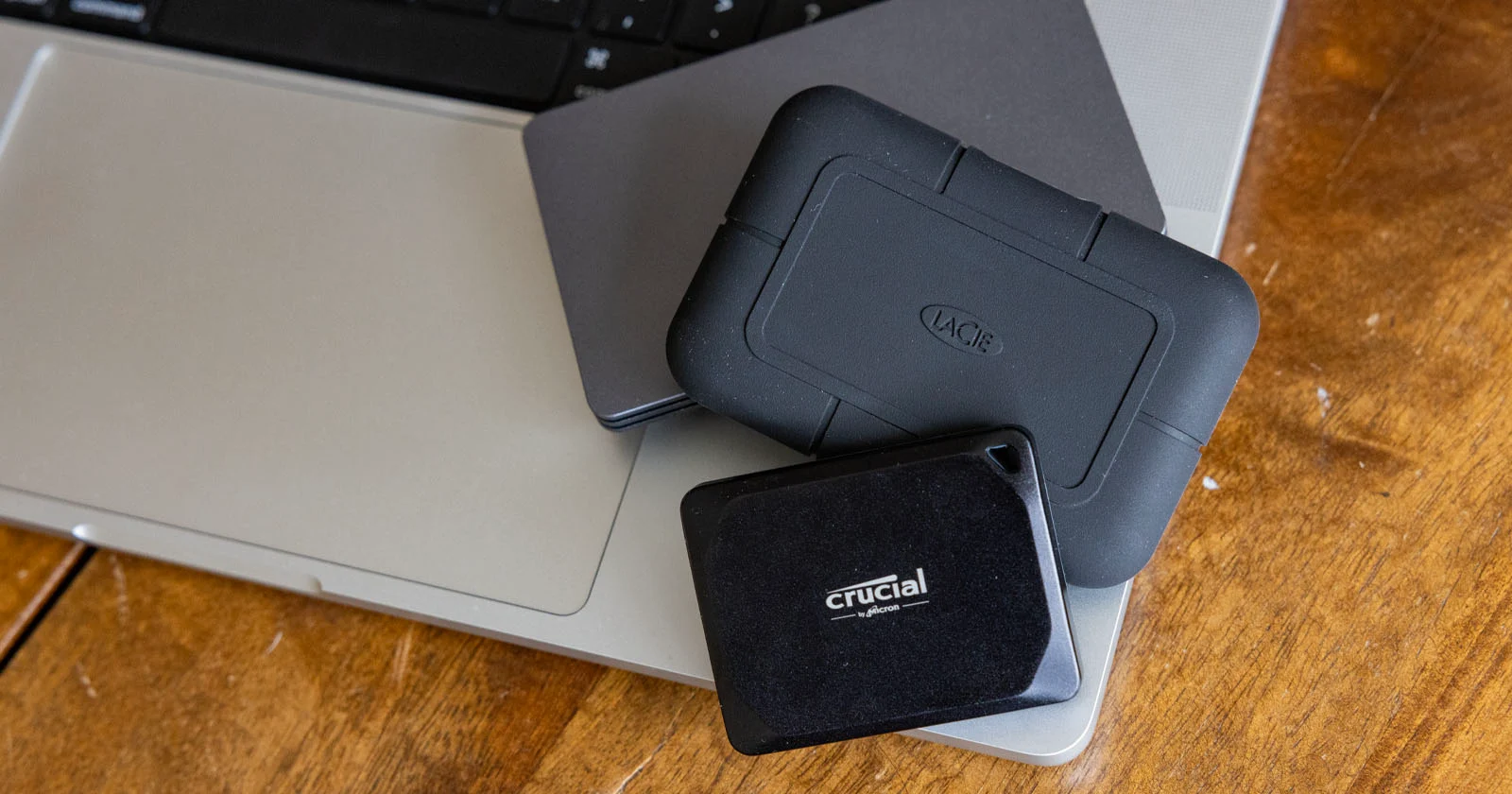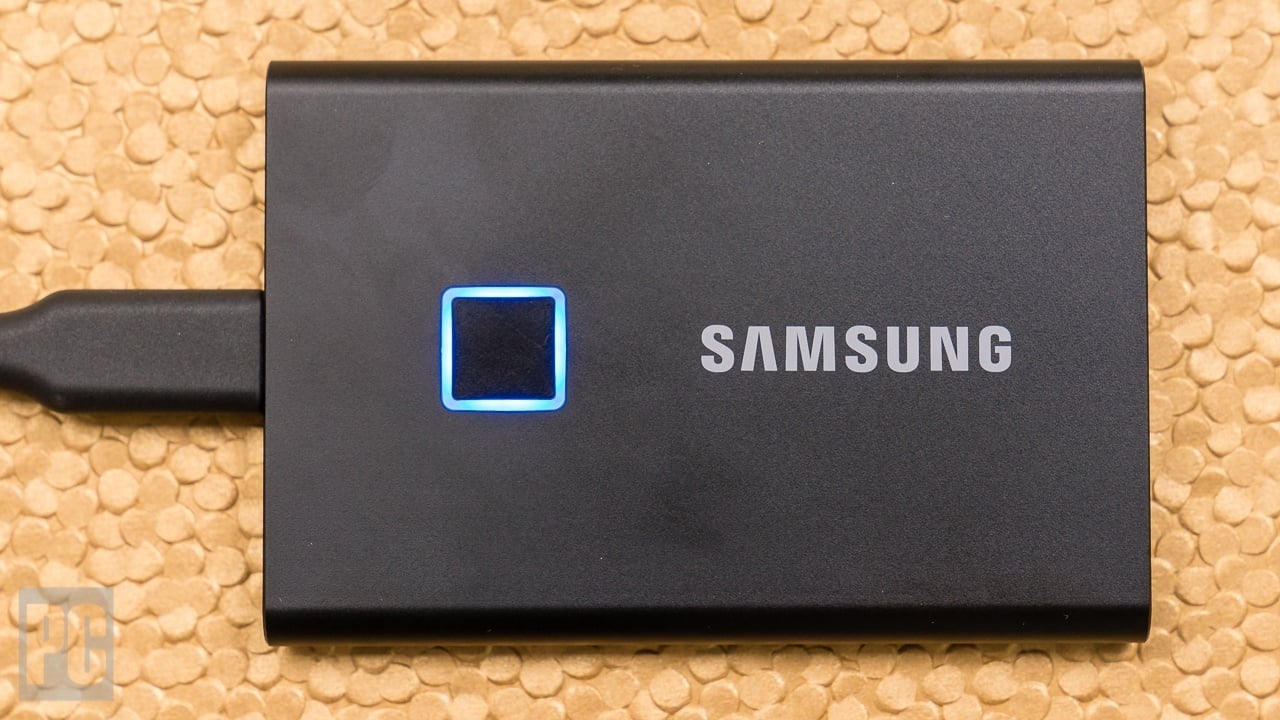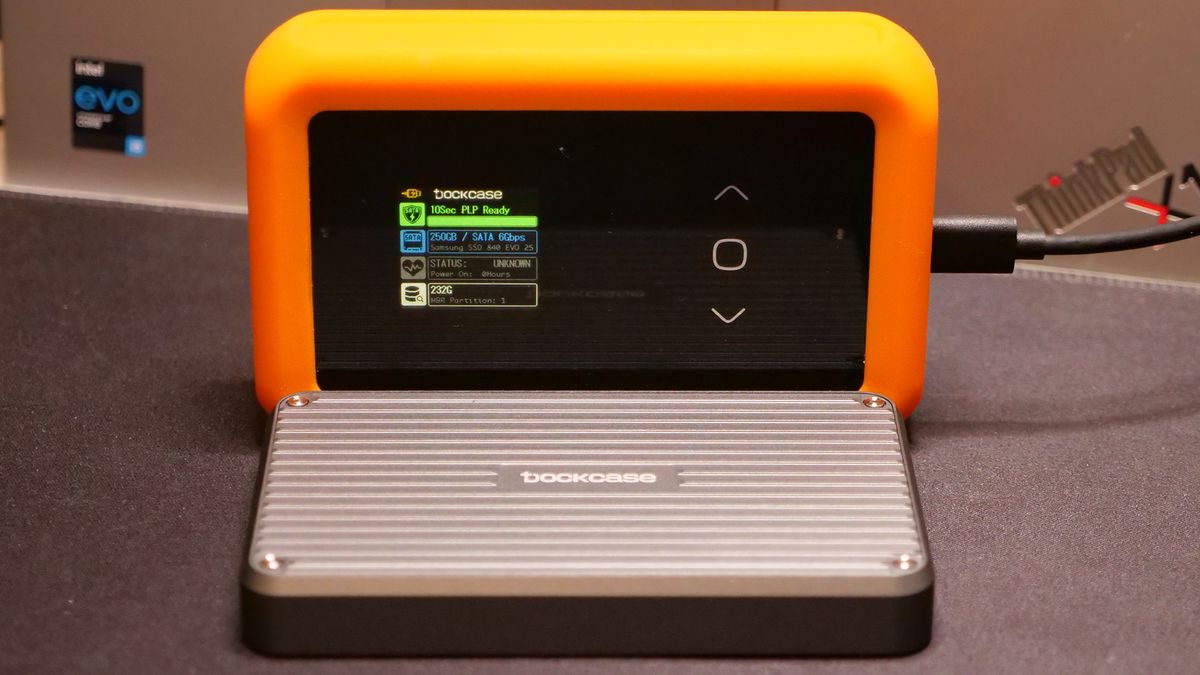Introduction
Welcome to the world of portable solid-state drives (SSDs). In this digital age, where data is king, having a reliable and efficient storage solution is paramount. Gone are the days of bulky external hard drives that slow down your workflow. Portable SSDs have revolutionized the way we store and access data on the go.
A portable SSD is a compact, lightweight, and high-performance storage device that allows you to carry your data with you wherever you go. Whether you are a professional photographer, videographer, content creator, or simply someone who needs to store and transfer large amounts of data, a portable SSD is a game-changer.
Unlike traditional external hard drives, which use spinning disks and magnetic heads to read and write data, portable SSDs utilize flash memory technology. This means faster read and write speeds, increased durability, and a smaller form factor.
In this article, we will delve into the world of portable SSDs, exploring their features, benefits, use cases, and important factors to consider when choosing one. Whether you are a tech enthusiast or a regular user looking to upgrade your storage solution, this guide will provide you with the necessary information to make an informed decision.
Definition of a Portable SSD
A portable solid-state drive (SSD) is a portable storage device that uses solid-state flash memory to store and retrieve data. Unlike traditional hard drives that rely on spinning disks and mechanical read/write heads, portable SSDs are built with non-volatile memory chips that offer faster speeds and greater reliability.
These sleek and compact devices are designed for mobility, allowing users to carry their data in their pocket or bag. Portable SSDs typically connect to devices such as laptops, desktops, and tablets via USB, Thunderbolt, or other high-speed interfaces. They are available in various storage capacities, ranging from a few hundred gigabytes to several terabytes.
Portable SSDs are known for their outstanding performance. With read and write speeds that can be up to five times faster than traditional hard drives, they enable faster data transfer, smoother file access, and quicker boot-up times. This makes them an excellent choice for professionals who work with large files, such as photographers, videographers, and graphic designers.
Another defining feature of portable SSDs is their durability. Since they do not have any moving parts, they are less susceptible to physical damage caused by drops, bumps, or vibrations. This makes them ideal for travelers who need reliable storage solutions for their data during transportation.
Furthermore, portable SSDs offer a significant advantage in terms of energy efficiency. By requiring less power to operate, they help extend the battery life of your devices, making them an optimal choice for users who are constantly on the move or working away from a power source.
Overall, a portable SSD combines the advantages of speed, reliability, durability, and portability, making it an excellent choice for anyone who needs fast and secure storage on the go. With their compact design and high-performance capabilities, portable SSDs have become an essential tool for professionals and casual users alike.
How Does a Portable SSD Work?
To understand how a portable SSD works, let’s first take a look at its internal components. The core of a portable SSD is the flash memory, which is a type of non-volatile storage medium that retains data even when power is removed.
Portable SSDs typically utilize NAND flash memory, which is organized into cells that can store multiple bits of data. The cells are further organized into pages, blocks, and planes to facilitate efficient read and write operations.
When you connect a portable SSD to your device, it communicates with the host system through a high-speed interface such as USB or Thunderbolt. The portable SSD appears as a separate drive on your computer, just like a traditional external hard drive.
When you transfer data to the portable SSD, the controller inside the SSD processes the data and stores it in the flash memory cells. The controller manages data flow, performs error correction, and optimizes performance to ensure reliable and efficient storage.
When you access the stored data, the controller retrieves the information from the flash memory and transfers it to your device. The fast read and write speeds of a portable SSD allow for quick data retrieval, resulting in faster file access and smoother multitasking.
One of the key advantages of portable SSDs is their lack of moving parts. Unlike traditional hard drives, which rely on spinning disks and mechanical read/write heads, portable SSDs have no moving components that can cause mechanical failures or affect performance. This makes them more reliable and durable.
Portable SSDs also incorporate wear-leveling technology, which distributes data evenly across the flash memory cells. This helps prevent certain cells from being overused, which can lead to data corruption or reduced lifespan. Wear-leveling ensures that the SSD maintains optimal performance and longevity.
In summary, a portable SSD works by utilizing flash memory to store and retrieve data. Its controller manages the data flow, error correction, and performance optimization, while the lack of moving parts and wear-leveling technology contribute to its reliability and longevity. The fast read and write speeds of a portable SSD enable quick and efficient data access for improved productivity on the go.
Benefits of Using a Portable SSD
Using a portable SSD offers a multitude of benefits over traditional external hard drives. Let’s explore some of the key advantages:
- Speed: Portable SSDs provide significantly faster read and write speeds compared to traditional hard drives. This means faster data transfer, quicker file access, and reduced waiting times. Whether you’re transferring large files, editing videos, or running resource-intensive applications, the speed of a portable SSD can greatly enhance your productivity.
- Portability: As the name suggests, portable SSDs are designed to be lightweight and compact, making them highly portable. These small devices can fit into your pocket or bag with ease, allowing you to take your important files, documents, and media wherever you go. Whether you’re traveling for work or simply need to access your data on multiple devices, a portable SSD provides the ultimate convenience.
- Durability: Portable SSDs are built with solid-state flash memory, which means they have no moving parts. Unlike traditional hard drives with spinning disks, portable SSDs are more resistant to shock, vibrations, and physical damage. This durability makes them perfect for users who are constantly on the move or require reliable storage in rugged environments.
- Energy Efficiency: Portable SSDs consume less power compared to traditional hard drives. This not only helps prolong the battery life of your devices, but it also reduces heat generation. With less heat being produced, the chances of overheating and system slowdowns are minimized, ensuring smoother operation and improved overall performance.
- Quiet Operation: Since portable SSDs don’t have any moving parts, they operate silently. Unlike traditional hard drives that can produce noise from spinning disks and mechanical components, a portable SSD provides a quiet and peaceful work environment. This is especially beneficial for users who require a noise-free environment, such as audio engineers or video editors.
The benefits of using a portable SSD are clear. With faster speeds, increased portability, enhanced durability, improved energy efficiency, and silent operation, a portable SSD is an invaluable tool for professionals, students, and anyone who values secure and efficient storage.
Comparison with Traditional External Hard Drives
When it comes to choosing between a portable SSD and a traditional external hard drive, there are several factors to consider. Let’s compare these two storage options:
- Speed: Portable SSDs offer significantly faster read and write speeds compared to traditional hard drives. The absence of moving parts in SSDs allows for quick data access, file transfer, and improved overall performance. On the other hand, traditional hard drives rely on mechanical components, resulting in slower data access and file transfer speeds.
- Portability: Portable SSDs are specifically designed with portability in mind. They are lightweight, compact, and easy to carry around. Traditional external hard drives, while still portable, tend to be bulkier and heavier due to the inclusion of spinning disks and mechanical parts.
- Durability: Portable SSDs have an advantage in terms of durability. With no moving parts, they are more resistant to shock, physical damage, and data loss. Traditional hard drives, on the other hand, are more susceptible to failure due to the vulnerability of their mechanical components.
- Capacity: When it comes to storage capacity, both portable SSDs and traditional hard drives offer a wide range of options. However, traditional hard drives generally provide higher capacity options at a more affordable price per gigabyte compared to portable SSDs. So, if you require massive storage capacity at an affordable price, a traditional hard drive may be a better choice.
- Power Consumption: Portable SSDs consume less power compared to traditional hard drives. This means they are more energy efficient and can help extend the battery life of your devices, which is especially useful for users who rely on laptops and other portable devices.
- Noise Level: Portable SSDs operate silently since they do not have any moving parts. In contrast, traditional hard drives can produce noise from spinning disks and mechanical components, which may be a consideration in noise-sensitive environments.
In summary, portable SSDs offer significant advantages over traditional external hard drives in terms of speed, portability, durability, power consumption, and silent operation. However, when it comes to storage capacity, traditional hard drives may offer higher capacity options at a more affordable price. Consider your specific needs and priorities to determine which storage solution is the best fit for you.
Use Cases for Portable SSDs
Portable SSDs are incredibly versatile storage solutions suitable for a wide range of use cases. Let’s explore some of the most common scenarios where portable SSDs shine:
- Professional Photography and Videography: For photographers and videographers, a portable SSD is essential. The high-performance and fast transfer speeds allow for seamless saving and editing of large RAW image files and high-resolution video footage. It enables efficient workflows and ensures reliable backup and storage for important visual content.
- Content Creation: Graphic designers, animators, and content creators can greatly benefit from using portable SSDs. The fast read and write speeds enable smooth handling of large design files, video rendering, and complex project work, enhancing productivity and creative output.
- Gaming: Gamers who need to carry their gaming library with them can rely on portable SSDs. With their fast loading times, portable SSDs ensure quick game installations and faster loading screens, enhancing the gaming experience, especially for those playing on multiple devices or traveling to gaming events.
- Business and Office Use: In a professional setting, portable SSDs offer a secure and efficient storage solution for sensitive business documents, presentations, and client files. They provide a compact and reliable way to store and transfer data between colleagues or bring important information to meetings and presentations.
- Traveling and On-the-Go: Whether you’re traveling for business or pleasure, a portable SSD is a must-have companion. Its small form factor and durability make it ideal for safely storing important documents, pictures, and videos while on the move. Plus, the fast read and write speeds ensure quick access to your files, making it easy to work or share your media wherever you are.
- Backup and Data Storage: Portable SSDs are excellent for backing up critical data and providing additional storage space. With their high-speed connectivity and large storage capacities, they offer a reliable and convenient option for safeguarding important files, ensuring that you have a backup copy in case of system failures or data loss.
These are just a few examples of the countless use cases for portable SSDs. Their versatility, performance, and portability make them indispensable tools for professionals, students, travelers, and anyone seeking fast and secure storage for their data.
Factors to Consider When Choosing a Portable SSD
When selecting a portable SSD, there are several important factors to consider to ensure you choose the right one for your needs. Here are the key considerations:
- Storage Capacity: Determine the amount of storage capacity you require based on your usage. Consider the size of files you work with and the volume of data you need to store.
- Speed and Performance: Look for a portable SSD with fast read and write speeds for quick data transfer and smooth file access. Consider the interface, such as USB 3.0 or Thunderbolt connections, for high-speed connectivity.
- Compatibility: Ensure that the portable SSD is compatible with your devices. Check for compatibility with your operating system (Windows, macOS, Linux) and the specific interfaces supported by your devices (USB, Thunderbolt, etc.).
- Durability: Consider the durability features of the portable SSD, such as shock resistance and protection against dust and water. This is particularly important if you plan to use the drive in rugged environments or during travel.
- Security Features: If data security is a concern, look for portable SSDs that offer hardware encryption or software-based encryption options to protect your sensitive information.
- Form Factor and Portability: Consider the physical size and weight of the portable SSD, especially if you plan to carry it in your bag or pocket. Look for a compact form factor that suits your needs without compromising on storage capacity and performance.
- Price: Set a budget for your portable SSD purchase and compare prices across different brands and models. Consider the balance between storage capacity, speed, and other features that align with your requirements.
- Brand Reputation: Research and choose a reputed brand known for producing reliable and high-quality portable SSDs. Read reviews and user experiences to gain insights into the performance and reliability of different products.
By considering these factors, you can ensure that you make an informed decision and select a portable SSD that meets your storage needs, performance expectations, and budget constraints. Remember to prioritize your specific requirements and preferences to find the perfect portable SSD for your use case.
Tips for Proper Maintenance of a Portable SSD
To ensure optimal performance and longevity of your portable SSD, it’s important to follow some best practices for maintenance. Here are some tips to keep your portable SSD in excellent condition:
- Backup Data: Regularly back up your data to ensure that you have a copy in case of accidental deletion, device failure, or other unforeseen circumstances. It’s always better to be prepared for data loss.
- Keep Firmware Updated: Check for firmware updates from the manufacturer and regularly update the firmware of your portable SSD. These updates often include bug fixes, performance improvements, and security enhancements.
- Handle with Care: Although portable SSDs are designed to be durable, it’s still important to handle them with care. Avoid dropping or subjecting the drive to excessive impact or pressure that may cause physical damage or data loss.
- Avoid Extreme Temperatures: Exposing your portable SSD to extreme temperatures can impact its performance and reliability. Avoid leaving it in extremely hot or cold environments for an extended period. Store it in a cool, dry place when not in use.
- Protect Against Viruses and Malware: Use reliable antivirus software to protect your portable SSD from viruses and malware. Scan the drive regularly to ensure its integrity and prevent malicious software from damaging your data.
- Safely Remove the Drive: Always follow proper ejection procedures before disconnecting your portable SSD from your device. This helps prevent data corruption and ensures that all files are safely written to the drive before removal.
- Keep Unused Drives in Safe Storage: If you have multiple portable SSDs or spare ones, store them in a clean and safe place to protect them from dust, moisture, and other potential damaging factors.
- Regularly Clean the Exterior: Keep the exterior of your portable SSD clean by wiping it gently with a soft, lint-free cloth. Avoid using harsh chemicals or abrasive materials that may scratch or damage the surface.
- Monitor Drive Health: Use built-in SSD health monitoring tools or third-party software to monitor the health and performance of your portable SSD. This can help identify any potential issues early on and take necessary steps for data protection.
By following these maintenance tips, you can ensure a longer lifespan and optimal performance for your portable SSD. Proper care and regular monitoring will help you enjoy reliable and efficient storage for your valuable data.
Frequently Asked Questions (FAQs)
Here are some frequently asked questions about portable SSDs:
- Q: Are portable SSDs faster than traditional hard drives?
- Q: Can I use a portable SSD with both Windows and macOS?
- Q: How durable are portable SSDs?
- Q: Are portable SSDs more expensive than traditional hard drives?
- Q: Can I use a portable SSD for gaming?
- Q: Can I password-protect my portable SSD?
- Q: How do I connect a portable SSD to my device?
- Q: Can I use a portable SSD with gaming consoles?
- Q: Can I partition a portable SSD for different purposes?
A: Yes, portable SSDs are significantly faster than traditional hard drives. They offer faster read and write speeds, resulting in quicker data transfer and smoother file access.
A: Yes, portable SSDs are compatible with both Windows and macOS. Most portable SSDs come formatted with the exFAT file system, which is compatible with both operating systems.
A: Portable SSDs are built to be durable. They don’t have any moving parts, making them more resistant to shock, vibrations, and physical damage compared to traditional hard drives.
A: Portable SSDs are generally more expensive than traditional hard drives on a cost-per-gigabyte basis. However, the price gap has been narrowing over time as SSD technology becomes more affordable.
A: Yes, portable SSDs are great for gaming. They provide faster loading times, quicker game installations, and improved performance, enhancing the gaming experience.
A: Some portable SSDs offer encryption features that allow you to password-protect your data. Check the product specifications or software options provided by the manufacturer for encryption capabilities.
A: Portable SSDs typically connect to devices via USB or Thunderbolt interfaces. Ensure that your device has the necessary ports and compatibility for the specific interface used by your portable SSD.
A: Yes, portable SSDs are compatible with some gaming consoles that support external storage. Check the specific requirements and compatibility of your gaming console before connecting a portable SSD.
A: Yes, you can partition a portable SSD into multiple sections to allocate space for different purposes, such as separating work and personal files. Disk management tools in your operating system can help you with this task.
These are just a few commonly asked questions about portable SSDs. If you have further inquiries or concerns, consult the manufacturer’s documentation or reach out to their customer support for more specific information.
Conclusion
Portable SSDs have revolutionized the way we store and access data on the go. With their compact design, fast read and write speeds, and durable construction, portable SSDs offer numerous advantages over traditional external hard drives. They are ideal for professionals who work with large files, gamers who need fast loading times, and anyone who values portability and reliability in their storage solution.
When choosing a portable SSD, consider factors such as storage capacity, speed, durability, compatibility, and price. This will ensure that you select a portable SSD that aligns with your specific needs and requirements.
Remember to properly maintain your portable SSD by regularly backing up your data, keeping the firmware updated, handling the drive with care, and protecting it from extreme temperatures. By following these maintenance tips, you can prolong the lifespan and maximize the performance of your portable SSD.
Whether you’re a photographer, content creator, business professional, or casual user, a portable SSD is a valuable tool for efficient and reliable storage. Embrace the power of portable SSDs and enjoy the convenience of fast and secure data access wherever you go.









